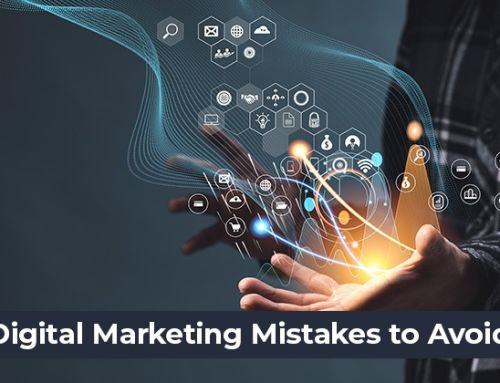A website is essentially a storefront for your small business in the modern digital world. To maximize your sales strategy, however, you must comprehend who is entering and what they are accomplishing, just like in a physical store.
Analytics used in digital marketing can help you to gain insightful knowledge about your online marketing endeavors by monitoring important indicators and making informed decisions based on data.
In this article, you will get to know about the seven digital marketing metrics that are most crucial for your small businesses, outlining what they track and how they may support your marketing objectives.
Top Digital Marketing Metrics to Consider
1. Traffic Source
For your marketing approach to be as effective as possible, you must know where your website visitors are coming from. This analysis is divide into different channels:
Direct: People who bookmarked your website or typed your URL into the search bar directly.
Organic Search: Those who found your website by clicking on a link in a search engine result. This shows how well your Search Engine Optimization (SEO) campaigns are working.
Social: Traffic originating from users who find your website through links to your social media profiles or content uploads on different social media platforms. This aids in determining how successfully traffic is being generated by your social media marketing.
Referral: A visitor who found your website through a link on another website. Find useful partners for referrals who provide quality leads.
Paid Advertising: Referrals from other websites, social media networks, or search engines that led to your paid advertisements. Examine which platforms yield the most returns on your advertising investment.
You can determine which channels are bringing in the most website visitors and conversions by examining the traffic sources. This enables you to concentrate your efforts on the channels that are performing the best while adjusting your approach for the ones that aren’t.
2. Pageviews and Engagement
Although significant, website traffic is only one aspect of the story. Additionally, you should be aware of how users are interacting with your website. This is where engagement metrics and pageviews are useful:
Average Duration of Session: The typical amount of time visitors spend on your website. A longer duration implies that they are finding your information interesting.
Page Views: The total amount of times people have visited your website. This shows how interested users are in your content.
Unique Pageviews: The number of distinct visitors to your website that have looked at a particular page.
Most Popular Pages: Determine which pages are receiving the most interest. Do they support your marketing objectives?
Bounce Rate: The portion of visitors to your website that depart after only reading one page is known as the “bounce rate.” A high bounce rate could be a sign of irrelevant material or a usability problem.
You can determine how successfully your website attracts and retains users’ interest by looking at these indicators. After that, you can tweak your website’s content and layout to increase user interaction and encourage them to continue perusing your products.
3. Conversion Rate
The end aim of the majority of marketing initiatives is conversions. This metric is considered when people perform actions on your website, such as buying something, subscribing to a newsletter, or downloading a white paper and so on. The percentage of visitors that finish a targeted action is your conversion rate.
You can determine what is and is not working for your website by monitoring conversion rates for various campaigns.
The following are important conversion rate metrics to think about:
- Overall Website Conversion Rate: It is a broad measure of how well your website converts visitors into buyers.
- Conversion Rate by Traffic Source: Examine which sources bring in the most likely-to-convert visitors.
- Conversion Rate by Landing Page: Determine which landing pages have the highest rate of visitor conversion.
You can pinpoint areas for development and enhance your website and marketing initiatives to produce more leads and sales by examining conversion rates.
4. Customer Acquisition Cost (CAC)
Optimizing your marketing budget requires that you have a clear understanding of the cost of acquiring a new client. The number of clients you acquired at that time is divided by your total marketing budget to determine your customer acquisition cost, or CAC.
You may evaluate the effectiveness of your marketing campaigns by monitoring CAC. Here are a few methods for examining CAC:
- Determine which marketing channels are the most economical for bringing in new clients. This is known as CAC by Channel.
- Keep an eye on CAC trends to determine whether your marketing initiatives are becoming more effective. This is known as CAC Over Time.
Through the analysis of CAC, you may focus on channels that provide customers at a reduced cost and more wisely manage your marketing budget.
5. Customer Lifetime Value (CLV)
The entire revenue that a client is anticipated to bring in for your company throughout the course of their engagement with you is known as the client Lifetime Value, or CLV. It’s critical to keep clients and promote repeat business in addition to acquiring new ones.
You can determine the long-term value of your consumers by monitoring their CLV. Here are a few methods for CLV analysis:
- Average Frequency of Customer Purchases: How frequently do customers, on average, make purchases from your company?
- Determine which client segments have the highest lifetime value (CLV) by customer segment.
You can raise the entire worth of your customers to your organization by implementing methods that cultivate existing client connections in addition to acquiring new ones by studying CLV.
6. Return on Investment (ROI)
The most reliable indicator of the effectiveness of your marketing initiatives is return on investment, or ROI. It provides you with an estimate of your income generation for each dollar you spend on marketing. This is how ROI for a certain marketing effort is calculated:
ROI = (Revenue Generated – Campaign Cost) / Campaign Cost * 100%
You may evaluate the success of your marketing activities by monitoring ROI. Determine which campaigns and channels yield the most return on your investment by analyzing their ROI. This enables you to concentrate on techniques that yield the highest revenue and optimize your marketing budget.
7. Social Media Engagement
Should social media marketing be a component of your approach, you must monitor the ways in which your audience engages with your material on these channels. Social media analytics shed light on indicators such as:
- Likes, shares, and comments are indicators of how well-received your work is by your audience.
- Follower Growth monitors the evolution of your social media following.
- Reach and impressions will recognize the number of individuals who are viewing your material.
- Measure the frequency with which users click on links in your social media postings using the Click-Through Rate (CTR).
Your target audience’s level of interaction with your material can be determined by examining social media engagement indicators. This enables you to improve your social media strategy and produce more interesting material that links back to your website.
Conclusion
You can learn a lot about the success of your online marketing campaigns by monitoring and evaluating these seven essential digital marketing metrics. By optimizing your website, content, and marketing efforts using a data-driven strategy, you can draw in more visitors, turn them into customers, and eventually meet your business objectives. Recall that analytics for digital marketing is a continuous activity. To ensure ongoing success, keep a close eye on your metrics, pinpoint areas for development, and modify your plan as necessary.






